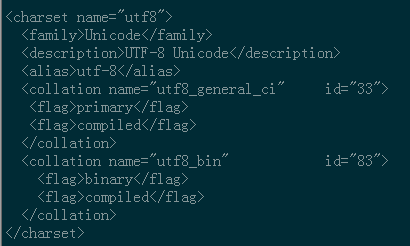
1. System environment
The system version after yum update upgrade is
[root@yl-web yl]# cat /etc/redhat-release centos linux release 7.1.1503 (core)
2. Mysql installation
Generally, the information given on the Internet is
#yum install mysql #yum install mysql-server #yum install mysql-devel
The installation of mysql and mysql-devel was successful, but the installation of mysql-server failed, as follows:
[root@yl-web yl]# yum install mysql-server loaded plugins: fastestmirror loading mirror speeds from cached hostfile * base: mirrors.sina.cn * extras: mirrors.sina.cn * updates: mirrors.sina.cn no package mysql-server available. error: nothing to do
After checking the information, it was found that the centos 7 version installed the mysql database The software is removed from the default program list and replaced by mariadb.
There are two solutions:
1. Method 1: Install mariadb
mariadb database management system is a branch of mysql, mainly open source It is maintained by the community and licensed under GPL. One of the reasons for developing this branch is that after Oracle acquired MySQL, there was a potential risk of closing MySQL as a source, so the community adopted a branch approach to avoid this risk. The purpose of mariadb is to be fully compatible with MySQL, including API and command line, making it an easy replacement for MySQL.
Install mariadb, size 59 m.
[root@yl-web yl]# yum install mariadb-server mariadb
The related command of mariadb database is:
systemctl start mariadb #启动mariadb systemctl stop mariadb #停止mariadb systemctl restart mariadb #重启mariadb systemctl enable mariadb #设置开机启动
So start the database first
[root@yl-web yl]# systemctl start mariadb
Then you can use mysql normally
[root@yl-web yl]# mysql -u root -p enter password: welcome to the mariadb monitor. commands end with ; or \g. your mariadb connection id is 3 server version: 5.5.41-mariadb mariadb server copyright (c) 2000, 2014, oracle, mariadb corporation ab and others. type 'help;' or '\h' for help. type '\c' to clear the current input statement. mariadb [(none)]> show databases; +--------------------+ | database | +--------------------+ | information_schema | | mysql | | performance_schema | | test | +--------------------+ 4 rows in set (0.00 sec) mariadb [(none)]>
Displayed after installing mariadb It's also mariadb [(none)]> , which may seem a bit unfamiliar. Here is the second method.
2. Method 2: Download and install mysql-server from the official website
# wget http://dev.mysql.com/get/mysql-community-release-el7-5.noarch.rpm # rpm -ivh mysql-community-release-el7-5.noarch.rpm # yum install mysql-community-server
Restart the mysql service after successful installation.
# service mysqld restart
When installing mysql for the first time, the root account does not have a password.
[root@yl-web yl]# mysql -u root welcome to the mysql monitor. commands end with ; or \g. your mysql connection id is 3 server version: 5.6.26 mysql community server (gpl) copyright (c) 2000, 2015, oracle and/or its affiliates. all rights reserved. oracle is a registered trademark of oracle corporation and/or its affiliates. other names may be trademarks of their respective owners. type 'help;' or '\h' for help. type '\c' to clear the current input statement. mysql> show databases; +--------------------+ | database | +--------------------+ | information_schema | | mysql | | performance_schema | | test | +--------------------+ 4 rows in set (0.01 sec) mysql>
Setting the password
mysql> set password for 'root'@'localhost' =password('password'); query ok, 0 rows affected (0.00 sec) mysql>
does not require restarting the database to take effect.
In the mysql installation process, the following content is as follows:
installed: mysql-community-client.x86_64 0:5.6.26-2.el7 mysql-community-devel.x86_64 0:5.6.26-2.el7 mysql-community-libs.x86_64 0:5.6.26-2.el7 mysql-community-server.x86_64 0:5.6.26-2.el7 dependency installed: mysql-community-common.x86_64 0:5.6.26-2.el7 replaced: mariadb.x86_64 1:5.5.41-2.el7_0 mariadb-devel.x86_64 1:5.5.41-2.el7_0 mariadb-libs.x86_64 1:5.5.41-2.el7_0 mariadb-server.x86_64 1:5.5.41-2.el7_0
So after the installation is completed, mariadb will be automatically replaced and will no longer take effect.
[root@yl-web yl]# rpm -qa |grep mariadb [root@yl-web yl]#
3. Configure mysql
1. Encoding
Mysql configuration file is/etc/my.cnf
Add at the end Encoding configuration
[mysql] default-character-set =utf8
The character encoding here must be consistent with /usr/share/mysql/charsets/index.xml.

2. Remote connection settings
Assign all permissions of all tables in all databases to the root user located at all IP addresses.
mysql> grant all privileges on *.* to root@'%'identified by 'password';
If it is a new user instead of root, you must first create a new user
mysql>create user 'username'@'%' identified by 'password';
Then you can connect remotely.
The above is the detailed content of How to install and configure centos7 mysql database. For more information, please follow other related articles on the PHP Chinese website!




